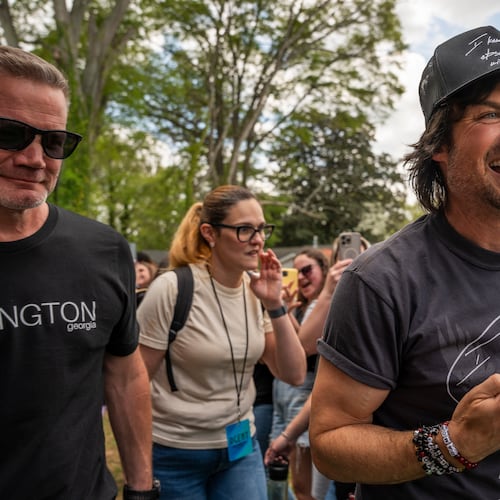Thirty years ago this month — “A Different World” was still finding its way, and “The Quad” was still a generation in the future — Atlanta-born filmmaker Spike Lee introduced a large portion of the culture to black colleges with his landmark film, “School Daze.”
“Today, 30 years later, people still come up to me and say, ‘Spike, you are the reason I went to a black school. I didn’t even know there were black schools. You are the reason I went to college. You are the reason I am in this job,” Lee said. “That film really changed people’s lives.”
» MORE: Read the AJC's full HBCU series
Lee, a 1979 graduate of Morehouse College, was in Atlanta Monday for a special anniversary screening of the movie at the Fox Theater.
Atlanta Mayor Keisha Lance Bottoms presented Lee with a Phoenix Award, one of the city's highest civic honors.
Lee called Presidents Day "Barack Obama Day" as thousands of fans — decked out in HBCU or Greek letter sweaters — did “Da Butt” in the aisles, booed Big Brother Almighty, saluted the late Ossie Davis and Phyllis Hyman and wept for Jane.
Before the event, he stopped by The Atlanta Journal-Constitution to talk about the movie and what he wanted it to say about black life as told through a specific college experience.
“School Daze,” when it debuted in 1988, told of a homecoming weekend at the fictional Mission College in Atlanta.
The film, which was shot around the Atlanta University Center, was one of the first modern features shot in a city that has become the Southern Hollywood.
This weekend’s blockbuster, “Black Panther,” was shot in Atlanta.
» MORE: Before there was Spike Lee, there was Oscar Micheaux
Fresh off his 1986 feature debut, “She’s Gotta Have It,” Lee’s “School Daze” tackled several controversial issues — class, gender, sex, ethnicity — that had been otherwise self-contained within the black community.
» LISTEN: Robert Cole's experience as an extra on "School Daze"
Over one weekend at Homecoming, students at Mission College addressed South African apartheid and political activism, the politics of skin color and hair texture, sexual violence and indifference, and Greek life and hazing.
All set to the music of Hyman, E.U. and the Gamma Rays.
One of the driving narratives in the film is the conflict between the light-skinned “Wannabees” and the dark-skinned “jigaboos.” Two weeks after filming started, Hugh Morris Gloster, then the president of Morehouse College, kicked the production off campus — in part, because he feared that the film would air “dirty laundry.”
» MORE: A history of HBCUs
Lee recalled a “sad” meeting with Gloster, after he was kicked off campus, to plead his case to stay.
“He said to me, ‘I don’t like the guy you cast as the college president (the late, great Joe Seneca). He looks too much like a sambo,’” Lee said. “He said that to my face. When he said that, I said, I know what we were doing was right. Because I had the president of Morehouse telling me the man I cast as the president was too dark-skinned.”
The movie also questioned what African-Americans are doing to maintain and support HBCUs. A question that hasn’t been fully answered 30 years later.
» GALLERY: HBCU alumni: Arts, entertainment and sports
“Black colleges are hurting,” Lee said. “Many of the states that have state-run black schools are still questioning their relevance. We brought that up in ‘88, but we still need them. We still can do a lot more to support our schools."
Lee’s visit to Atlanta also coincides with the conclusion of the AJC’s three-week long series on HBCUs.
» MORE: 17 Black colleges that didn't make it
“Black schools are who we are today,” Lee said. “Each one we lose, we are losing a piece of ourselves. We are losing a piece of our history. It’s who we are. It’s our legacy. It’s our lifeblood.”
About the Author
Keep Reading
The Latest
Featured





